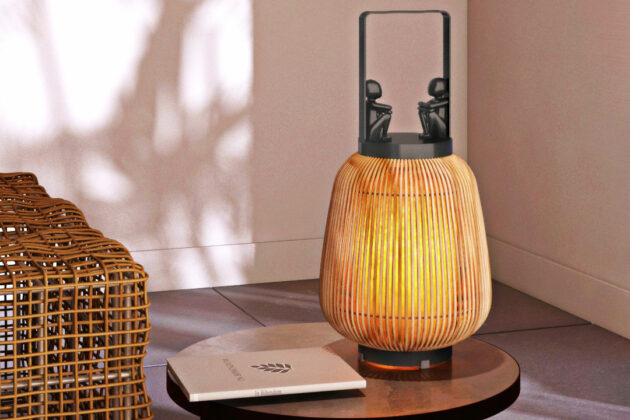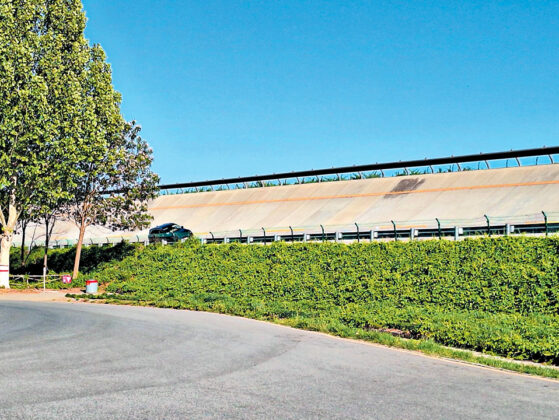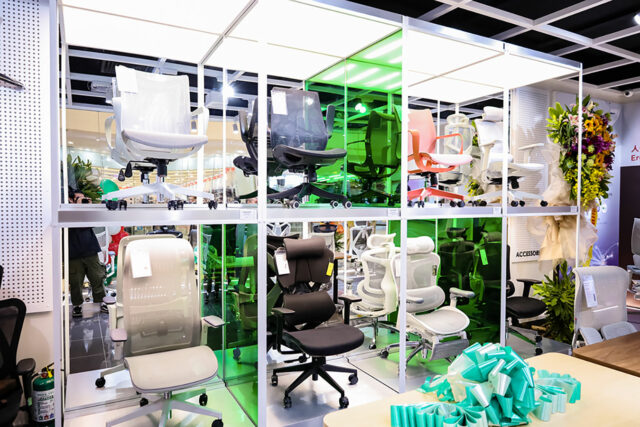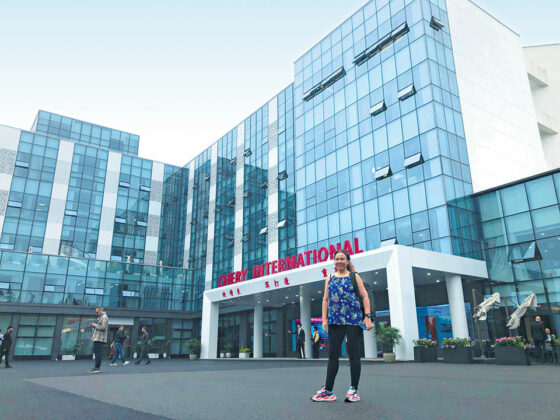DESIGNER Kenneth Cobonpue, born and raised in Cebu, has a mouthwatering client list — Forbes lists some of them as Queen Sophia of Spain, as well as then-power couple “Brangelina” (they have since split, but we assume the bed they purchased is still around somewhere). One can thus assume his prices skyrocket into the millions, but his new home in Rustan’s can allow one to get a piece from the designer for a mere P1450 (granted, that’s just a porcelain mouse, but still).
Rustan’s Makati gave Mr. Cobonpue space for KCurated, his home decor and accessories brand, and the designer made an appearance at its May 9 launch. Taking media guests on a short tour, he pointed at bowls (about P2800), lamps, and miniaturized versions of his famous chairs (though some of his full-sized pieces, like the Chiquita, a comfortable chair made with several wooden pegs that cradle one’s posterior, are also up for grabs). During the tour, he offered to sign any items bought during the day.
“We’ve always wanted to work with Rustan’s,” he told BusinessWorld in an interview, saying that they just couldn’t find the right formula for them to work together (home accessories seemed to be the key). He’s had a space in nearby Greenbelt for the past 10 years, but they have since announced moving to Bonifacio Global City’s Grand Hyatt Residences next month. “We just need a bigger space; we’ve been there for 10 years now. It’s just too small,” he said, noting that their new digs would have an art gallery and a cafe.
RATTAN: A TRIBUTE TO HIS MOTHER
Mr. Cobonpue has been known to work a lot with rattan, a species of climbing palms indigenous to the region. Rattan had been known as cane in the Western world, and furniture made from it has been well-regarded and treasured (Christian Dior had cane chairs in his atelier, and their famous Cannage quilted pattern was inspired by them). While their make is a symbol of regional pride, it also has a dark side: “caning” (a form of corporal punishment that involves being struck by a rattan cane) is still present in Southeast Asian countries, and were once a standard in some British schools. As well, the presence and fame of rattan furniture in the West can also be attributed to colonial practices.
Still, Mr. Cobonpue has praise for his chosen medium. “I’m very comfortable with rattan. It’s a great material because it’s very malleable and it’s sustainable. It’s easy to use,”he said. “It’s very robust…over time, of course, it biodegrades. It’s perishable. But with care, it lasts years; like decades.”
“With wood, you need to use a lot of energy to transform it into something. You cut it, you bend it — especially bending. That’s why rattan’s very sustainable. You can work (it with) your hands. You just need a torch. You don’t require a lot of energy to transform the material,” he said.
Also, the material is personal to him: “My mother used to work with rattan. She invented a technique for working with rattan that’s still patented. It’s well-used in their world of rattan manufacturing today.”
His mother is designer Betty Cobonpue, who had been active in the 1970’s and 1980’s. In an Instagram post last year, the designer said, “My mother, Betty Cobonpue, was my first design teacher. She had a strong sense of aesthetics and used this in creating beautiful forms using laminated rattan, which she had developed and popularized.”
“You know, not a lot of people know that,” he said about his mother’s own fame then — we had posed a question about him now being more famous than his mother had been. “I always knew how good she was. I was watching her work; I saw her designs. She had a really big collection. But she wasn’t really recognized for it. It was customary then that (when) you’re an Asian manufacturer, you produce things, you make it for other countries, and it goes under different brands; different names, sold wherever,” he said. “Her designs would be called something else in every country that she sold to.”
This lack of recognition for his mother’s masterpieces inspired him to create his own brand, and stamp his name and identity on it. “That’s why I decided to change all that, and made my own name. I insisted that (when) companies would buy from me, they had to use my name, they can’t change the name of the furniture, and (had to) label it Made in the Philippines.”
LUXURY, BUT FILIPINO
“When I did all these designs, I never thought about equating it with being Filipino. I just made it. Now, because it’s abroad…people associate this look (now) with the Philippines in the world of design,” he said.
We’ve mentioned rattan furniture as a remnant of colonial culture, and we point at Peacock chairs, rattan thrones made in Bilibid Prison and shipped to the United States during the American period of colonization. Chairs in the mold, showing a high, ornate back, had been used as seats by some of the most powerful people in the world, from John F. Kennedy to Marilyn Monroe. Mr. Cobonpue talks about how his own work with rattan connects to that heritage: “I think it reinvents rattan. It keeps it contemporary.”
More than changing the face of what rattan furniture looks like to the eyes of the world, he’s also out to change how the world sees the Filipino. ‘Aside from the designs, that would be, I think, my legacy: to create a brand, a Filipino brand, (that’s) luxury.”
“The biggest challenge, I think, is taking out the stereotype of what a Filipino is in the world,” he said. “In Europe, a Filipino is a domestic worker for most people.”
He gives an example of some of his pieces being priced similar to those of Italian designers, but people wondered about the high prices, since they were “only” made in the Philippines. “It’s as well-made as your Italian counterparts. It’s a stereotype we need to go against.”
“My challenge has always been to create something that is Filipino, yet very comfortable in an apartment in Milan; in New York. To be global, and still keep your identity.”
Despite being educated in New York and taking up apprenticeships in Germany and Italy, and having offices all around the world, his designs are still executed by craftsmen in Cebu. Asked what was in Cebu that made it all possible, he said, “Traditionally, Cebu had nothing. We have no agricultural land; nothing grows in Cebu. It’s always been a trading city. It’s always been a place where ideas are exchanged, and the people are very open, I guess, to the world.”
“We’ve always had to rely on our own resources, and the skills of our people.”
KCurated is exclusively available at Rustan’s Makati. – Joseph L. Garcia































